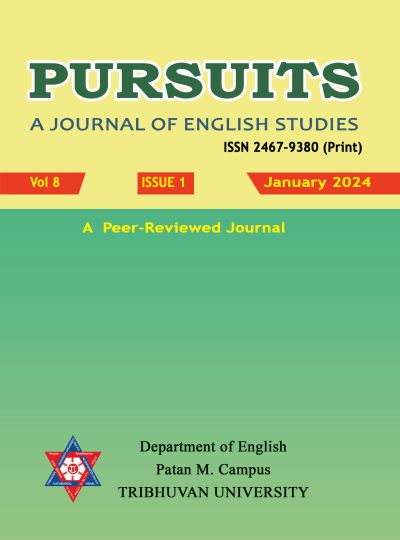Karuna Rasa- Aestheticized Pathos as Tragedy in Parashu Pradhan's The Telegram on the Table and A Relationship
DOI:
https://doi.org/10.3126/pursuits.v8i1.65342Keywords:
Anubhava, karuna rasa, Nepali literature, pathetic emotion, rasa theory, sthayibhava, vibhavaAbstract
Art and literature essentially depict a life and its emotions; the portrayed emotions in works of art touch the readers’ heart. The readers feel both pain and pleasure in tragedy. The study aims to expose karuna rasa, pathetic, tragic emotions in Parashu Pradhan's The Telegram on the Table and A Relationship from the perspective of the rasa theory. This paper discusses the tragic feelings and pathetic emotions of Nepali people depicted and inferred in Pradhan’s stories; it also analyzes the formation of karuna rasa, pathetic relish in reading his stories. This study is a library research and qualitative research; it has exploited Bharatmuni’s rasa theory as a theoretical tool. The main finding of the research is that the main rasa, emotion is the emotions of pathos, karuna rasa in these stories. The death of Krishna’s wife in the first story and the death of Ganga in the later one generate the pathetic sentiment, karuna rasa in the stories. The sufferings and miseries of Krishna and of Gyancha and Ganga in Kathmandu city in the later one evokes tragic emotions. Pradhan provides ample rooms for rasa evocation in the stories. The Nepali situation and environment intensify karuna rasa, aestheticized pathos and tragic relish in the stories. Although rasa realization may differ from one readers to next, pathetic sentiment, tragic feeling or karuna rasa is evoked in reading stories. The karuna rasa realization posits his writings grandeur in Nepali literature.




